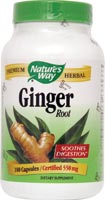|
Migraine nausea
Nausea can strike in different ways. About 80% of migraineurs get nauseous, but only 30% actually throw up. You may feel sick to your stomach, you may throw up once, or many times. In rare occasions, it may get so bad you become dehydrated. And nausea isn't just a migraine symptom - it can occur in cluster headaches, and on rare occasions with a really bad tension headache. Children with migraine usually deal with migraine nausea, often nausea with no headache at all. For children the symptoms can arrive quite suddenly. Treating Migraine Nausea1. General migraine treatmentIf you're not dealing with migraine as a disease in general, this may be the best place to start. The popular triptan drugs (such as Maxalt, Frova, Imitrex, etc) are known to help with migraine nausea. A study in 1997 (by Palevitch, D. G. Earon, and R. Carasso) showed that the herb feverfew may also help with nausea. Note that sometimes over the counter painkillers may actually cause nausea (actually, some migraine drugs can as well, in some people). Check the label and try a new approach if you find your nausea is still pretty intense. 2. Anti-nausea drugsAntinausea or antiemetic drugs are another line of attack. Common drugs used for migraine patients include Tigan (trimethobenzamide), Compazine (prochlorperazine), and Phenergan (promethazine). Phenergan is often prescribed for children with migraine as well. Gravol (dimenhydrinate)is also common. These types of drugs sometimes cause drowsiness, which can be a blessing during an attack. However, if you need to stay more alert ask your doctor for Reglan (metoclopramide) or another less-drowsy option. If taken with a migraine drug, Reglan may help the other medication absorb more quickly. 3. Self-help measuresThe Mayo Clinic offers these common sense suggestions - take it easy, stay hydrated (try sips of water, weak tea, clear soft drinks or broth. Don't drink too much at once), avoid food odors, and eat bland foods. Ginger for migraine nauseaWhen this article was published in HeadWay, my readers pointed out a glaring omission - ginger. In fact, in January 2006 a new study came out, reported in the American Journal of Obstetrics and Gynecology. They were looking at nausea and vomiting after surgery, and found that a dosage of at least 1 gram of ginger was a big help (there's still some concern because ginger can increase risk of bleeding around surgery).  There are different ways to take ginger. You can simply peel and slice a piece of ginger root. Queasy Pops Ginger and other special nausea "candy" is very handy. Strong ginger tea is great. Alvita has this Ginger Root (Caffeine Free) tea.
For more clinical precision, try Nature's Way Ginger Root . If you take 2 tablets, that gets you over the 1 gram amount and hopefully will get you over your nausea too. Many people recommend the simple aroma of ginger too. Dr. James L. Geiger recommends ginger aromatherapy. As always, use a 100% pure essential oil, such as this one sold by Aura Cacia. See Dr. Geiger's article on ginger oils and nausea.
Other ideas?A little sugar sometimes helps - a sports drink, for example. Patricia Zehna from the USA said that Aloe Vera juice is great to sip on. Nature's Way has very good Aloe Vera juice (I've found it cheapest at amazon.com, but check your local drugstore too). Fitting with the Mayo Clinic's suggestion to try bland foods, try some toast with jam or brown sugar and cinnamon. This information on migraine nausea is taken from an article first published in the free ezine, HeadaWay, in January 2006. If you'd like to be the first to read new information like this, sign up below for a free monthly subscription! References: Mayo Clinic on Migraine Headache, June 6 2005; Mayo Clinic on Nausea and Vomiting Apil 29 2005; Medline Plus Ginger prevents postop nausea and vomiting, January 16 2006; Headache and your Child (lots on migraine nausea) by Seymour Diamond, MD, 15 July 2001; wholehealthmedmd.com ginger; PubMed study Ginger for nausea and vomiting in pregnancy: randomized, double-masked, placebo-controlled trial, April 2001; What Your Doctor May NOT Tell You About Migraines by Drs. Mauskop and Fox, August 1 2001; Aromatherapy: New Tool for Fighting Post-Surgery Nausea & Vomiting, 29 January 2006 |

